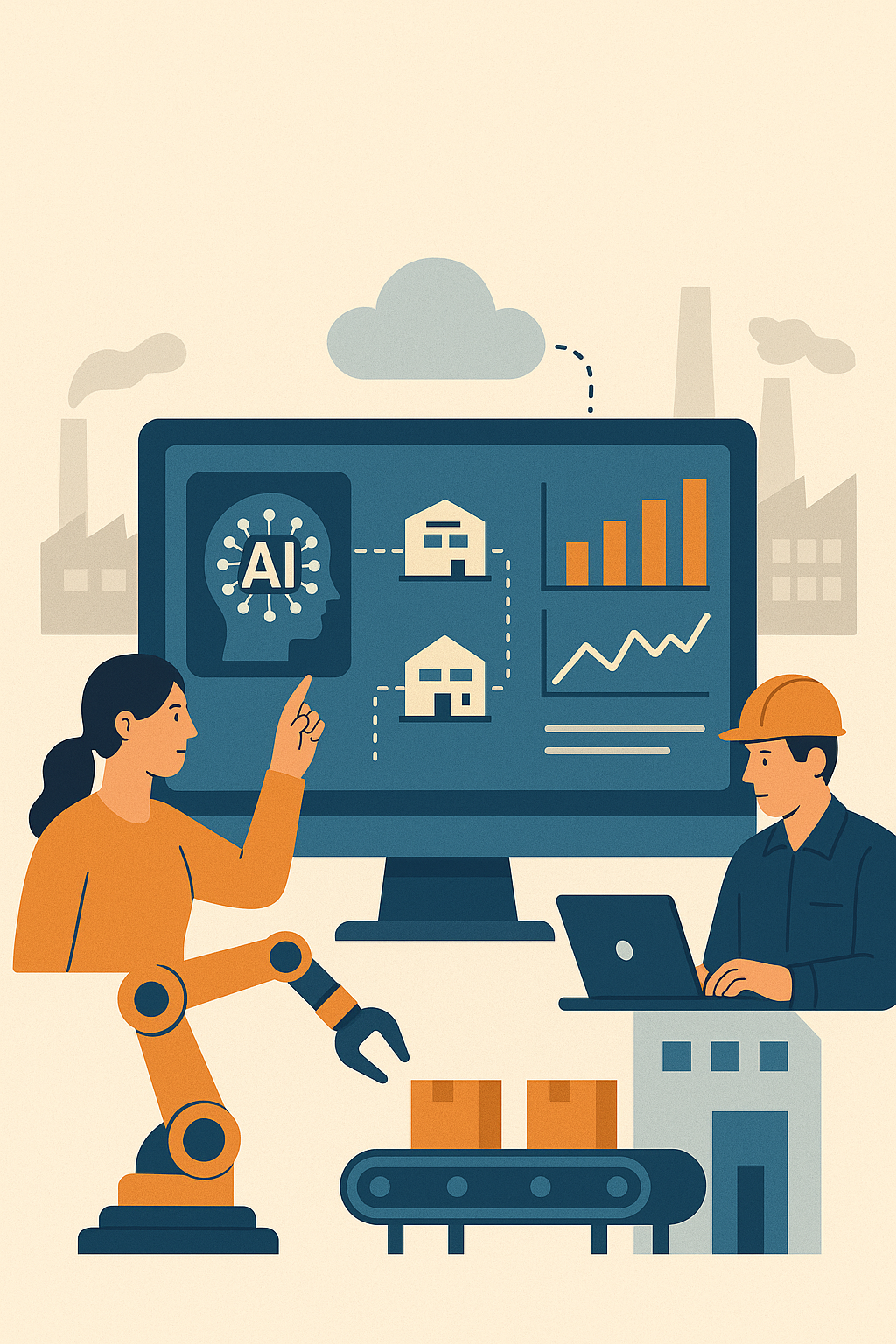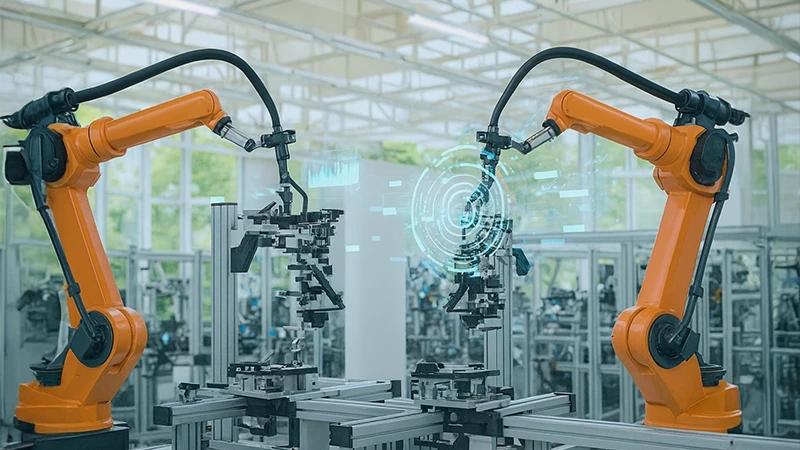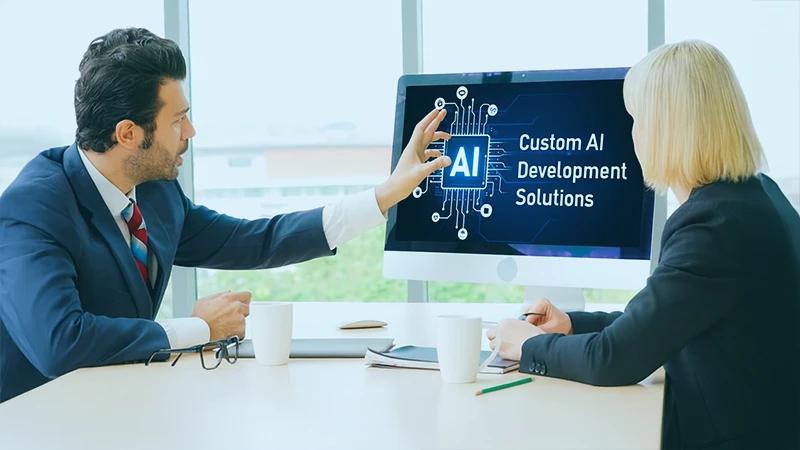Simulating AI in Manufacturing: Why Custom Tools Are the Future
Imagine you're running a large automotive plant. Your production lines churn out thousands of units daily. One machine breaks down. The ripple effect? Backlogs, missed targets, cost overruns. Before you can fix it, you're guessing what might go wrong next. That used to be the reality. Until AI stepped in.
Simulation has long been a key tool in manufacturing. Before AI, engineers built detailed models of their production environments. These were static, rule-based, and mostly disconnected from real-time operations. Useful, yes. But limited.
Today, we're in a new era. One where AI doesn't just model what could happen. It learns, adapts, and predicts. The result? Simulations that evolve with your factory, helping you make smarter, faster decisions.
The Old Way: Simulation Without Intelligence
Let’s go back a decade. Manufacturing simulation meant tools like discrete event simulation (DES) or finite element analysis (FEA). Engineers would create digital versions of production lines, define every rule manually, and run what-if scenarios.
These tools helped avoid costly mistakes. Want to test a new assembly layout? Simulate it first. Curious how downtime affects throughput? Run the numbers. But there was a problem: the models didn’t learn. They couldn’t adjust if conditions changed. And they relied heavily on expert users.
Every tweak took time. Every update required manual input. There was no feedback loop from the real world. These simulations were snapshots, not live systems.
Enter AI: Smarter, Connected, Always Learning
AI changed the game.
Now, instead of manually defining every scenario, machine learning models analyze real production data. They detect patterns, predict outcomes, and continuously improve.
Take BMW. At their Regensburg plant, they built a digital twin of the entire factory. Using NVIDIA’s Omniverse platform, they simulate robot interactions, material flow, even human ergonomics. The twin updates in real time, giving operations teams a live, predictive view of their plant.
This isn’t just cool tech. It’s saving time, cutting costs, and reducing downtime.
In this new approach, AI feeds live sensor data into models, refining predictions on machine failure, quality yield, and throughput. Reinforcement learning helps these systems find the best strategies in constantly changing environments. It's no longer about simulating a static future. It's about simulating and steering toward the best possible outcome.
Industry in Action: From Aerospace to High-Mix Lines
Across industries, simulation with AI is reshaping manufacturing.
In aerospace, Rolls-Royce uses AI-driven simulation to predict when engine parts will wear out. Their predictive models guide maintenance schedules with pinpoint accuracy, avoiding costly mid-flight surprises.
Electronics manufacturers like HP deal with hundreds of product variants. Using tools like SIMUL8 combined with AI, they simulate production flows, staffing, and layout adjustments. When a supplier delay hits or demand shifts, AI suggests the best reallocation of resources.
Additive manufacturing is another frontier. Traditional simulations can't always predict how new materials behave during 3D printing. AI fills that gap by learning from past prints and adjusting parameters in real time. This improves both first-time quality and speed to production.
These aren’t isolated experiments. They’re becoming the norm. And the results? Faster launches, fewer defects, more agile operations.
Off-the-Shelf Tools: Powerful but Limited
The simulation software market is full of capable tools:
- SIMUL8: Excellent for modeling discrete workflows and capacity planning
- AnyLogic: Flexible, with multi-method simulation (discrete, agent-based, system dynamics)
- FlexSim: 3D visualizations and material handling features
- Tecnomatix (Siemens): Strong digital twin integration
They’re widely used for planning, logistics, layout optimization, and resource balancing. But they weren’t built for AI-native use. That creates friction.
Most tools operate in silos. AI must be bolted on, often awkwardly. Integrating them with real-time shop floor data, ERP systems, or IoT sensors is complex. Creating new logic or custom metrics requires deep scripting or vendor services.
What does that mean in practice? Longer deployment times. Higher maintenance costs. And lower adaptability.
Where Off-the-Shelf Falls Short
- Limited AI Integration: These tools weren’t designed to natively ingest and learn from live data. You get historical what-ifs, not predictive insights.
- Slow to Adapt: A new machine or line change means reconfiguring models manually. When you need agility, the lag is painful.
- Generic Logic: Every plant has quirks. Off-the-shelf models assume standard processes, which means custom features need workarounds or complex modifications.
- High Skill Barrier: Most tools require simulation specialists. That narrows usage to a small team, limiting impact.
- Disconnected Systems: Without seamless integration to your MES, SCADA, or ERP, you’re always a step behind real operations.
The tools work. But they weren’t made for your factory, your metrics, or your speed of business.
Why Custom Simulation Tools Win
Custom simulation platforms are different. They’re built around your operations, not someone else’s assumptions.
- AI From the Ground Up: They integrate machine learning, reinforcement learning, and predictive models directly into the simulation engine. These systems don’t just simulate—they optimize.
- Live Data Loops: Custom tools connect to your IoT, sensors, and production systems in real time. That means simulations are constantly refreshed with live data.
- Your Metrics, Not Theirs: Want to simulate energy cost per unit? Line-specific OEE? Custom KPIs can be built into the model logic from day one.
- Low-Code Interfaces: With intuitive dashboards, even plant managers or line supervisors can run what-if scenarios. No PhD in simulation required.
- Scalable Architecture: Cloud-native design supports multi-site simulation, real-time collaboration, and fast re-deployment when your operations evolve.
- Faster Results: Need to know the impact of a layout change by next week? Custom tools can deliver simulations in hours, not days.
Real-World Example: Simulating Labor Shortages
A consumer goods company faced rising absenteeism due to seasonal illness. They needed to understand how this would affect output, shift planning, and delivery timelines.
Using a custom simulation platform built with Intellectyx.ai, they fed live HR and production data into the model. AI agents simulated different levels of absenteeism, tested staffing strategies, and suggested optimal resource shifts.
The result? 12% improvement in on-time delivery and 18% lower overtime costs. The entire analysis took less than 48 hours.
Another Use Case: New Product Launches
A medical device manufacturer was preparing to launch a new line. Rather than guessing at throughput and bottlenecks, they used a digital twin powered by AI. The tool simulated hundreds of configurations in minutes, predicting the ideal layout and shift model.
They reduced ramp-up time by 30%, and hit quality targets two weeks ahead of schedule.
The Future Is Adaptive, Not Static
Manufacturing doesn’t stand still. Your simulations shouldn’t either.
With AI-powered, custom-built simulation tools, you’re not just modeling possibilities. You’re guiding operations. Anticipating change. Making proactive decisions that save millions.
You move from “what-if” to “what’s best.”
At Intellectyx.ai, we help manufacturers build simulation platforms that think, learn, and act. With more than 200 team members across four global offices and over 93% client retention, we’ve helped companies like DQLabs, HunterLab, and Church Community Builder transform operations through intelligent automation.
We don’t just build tools. We build AI agents that deliver outcomes—faster decisions, zero downtime, 24/7 simulation capability, and 8x productivity improvements.
Let’s build your future. Schedule a Free Consultation






